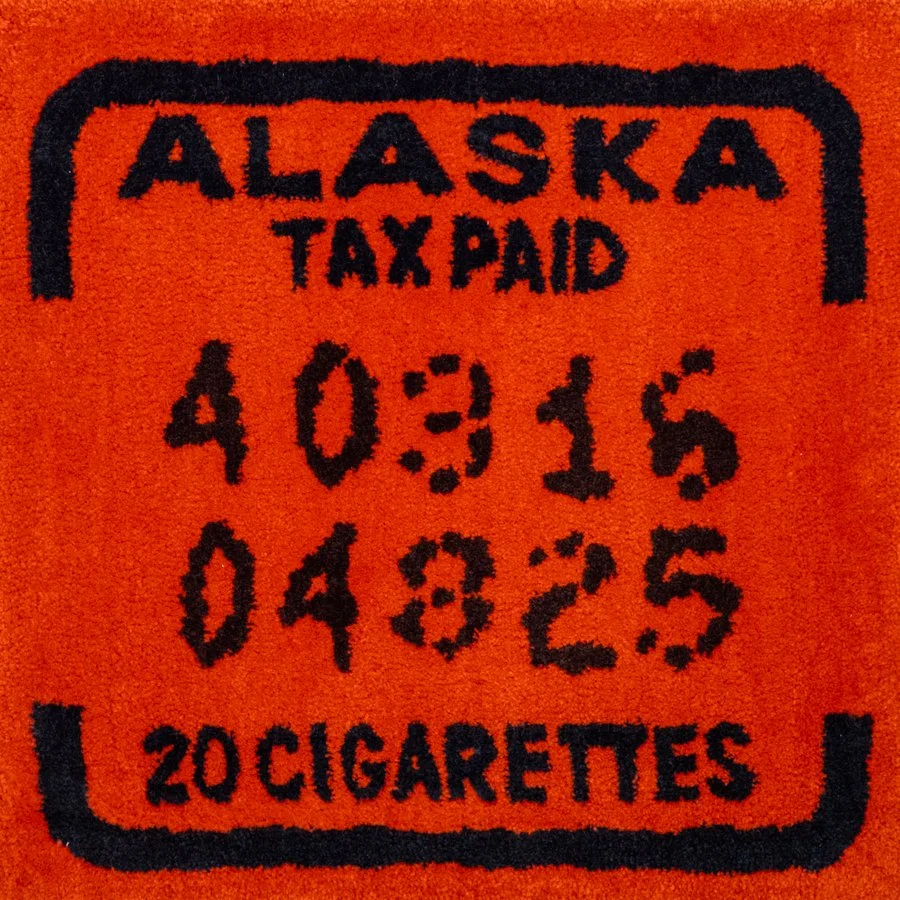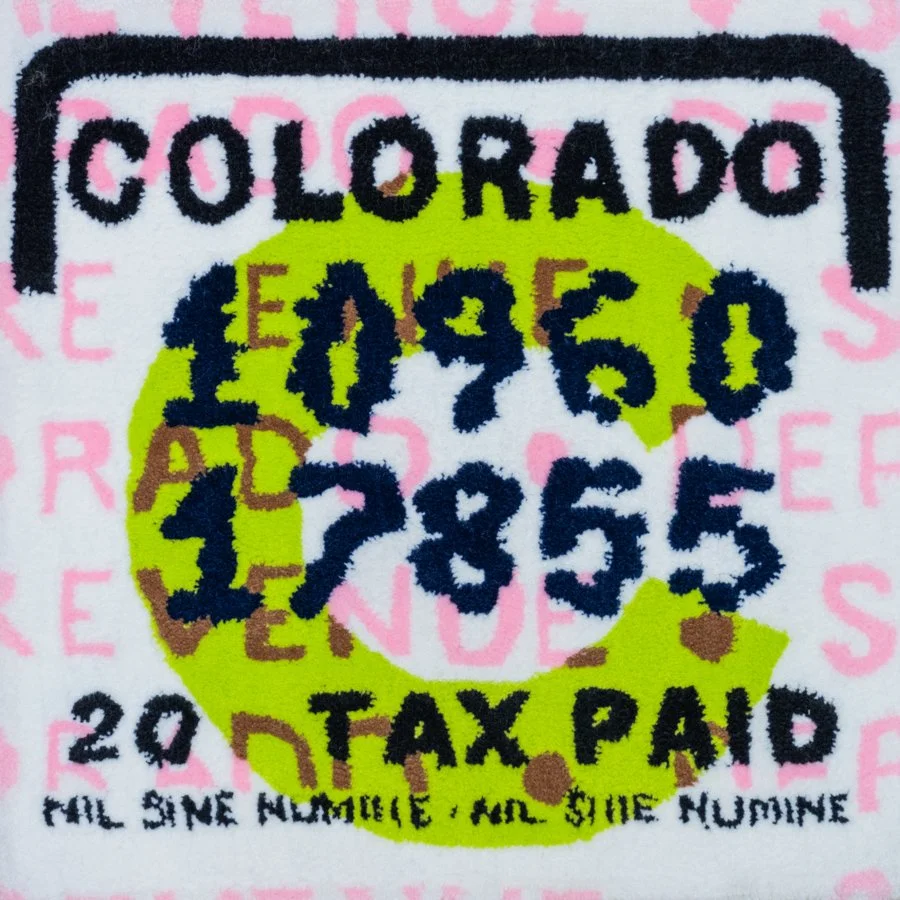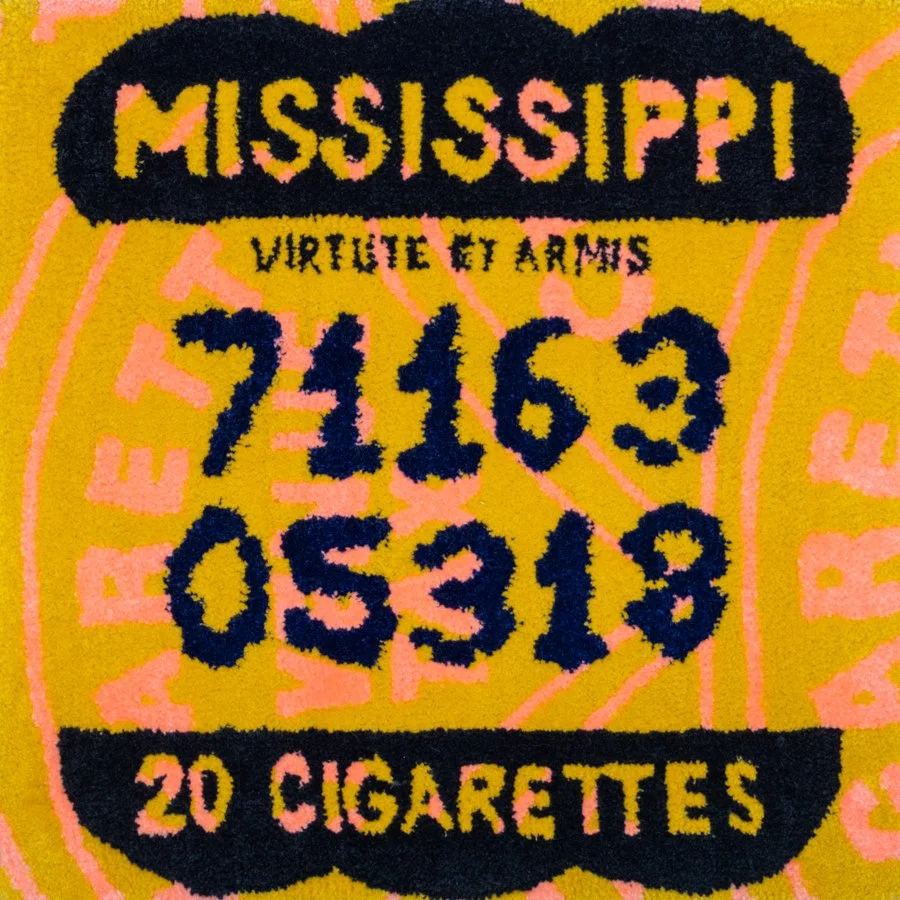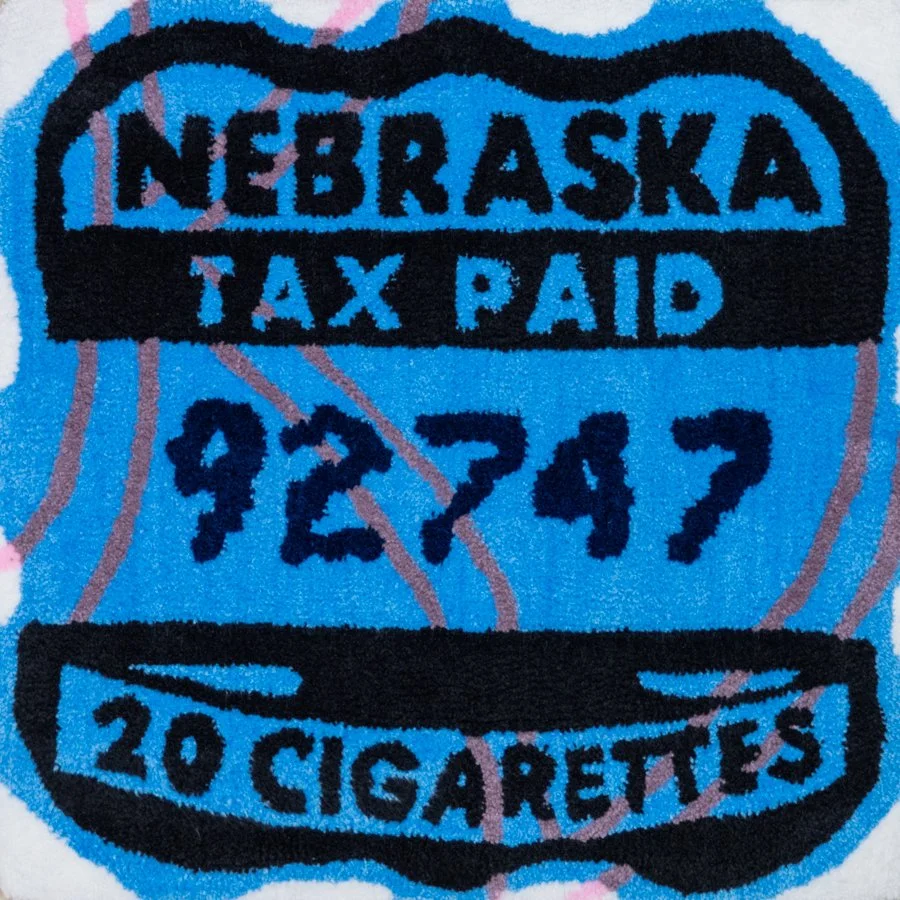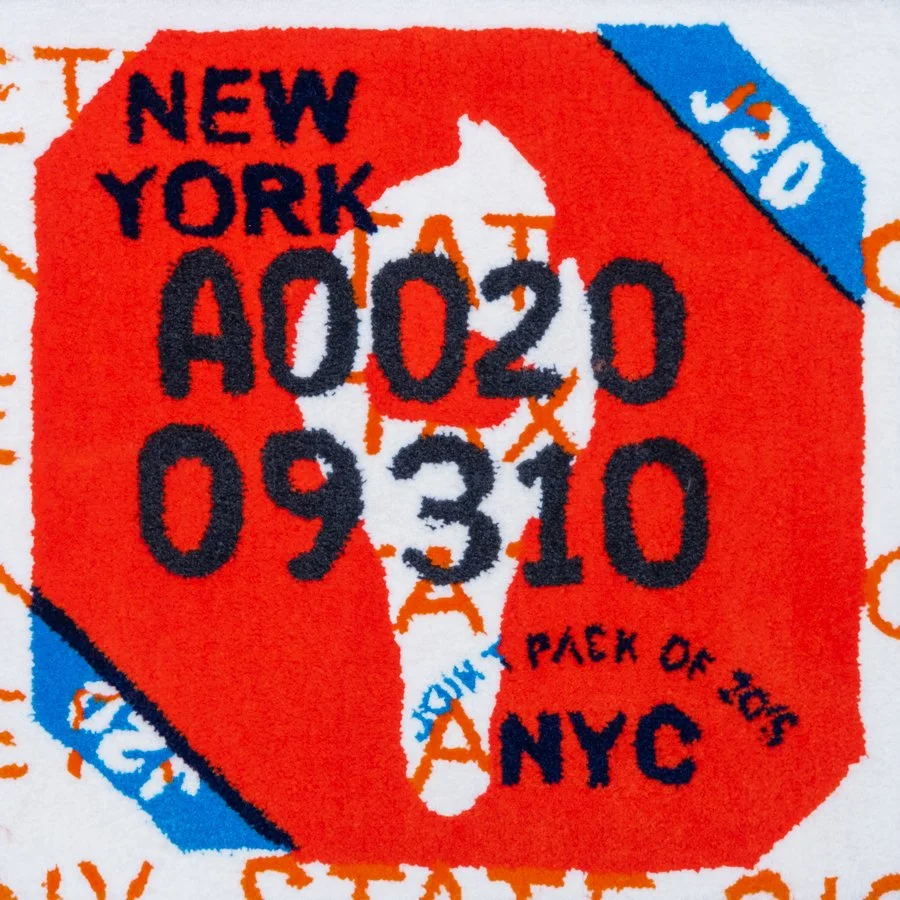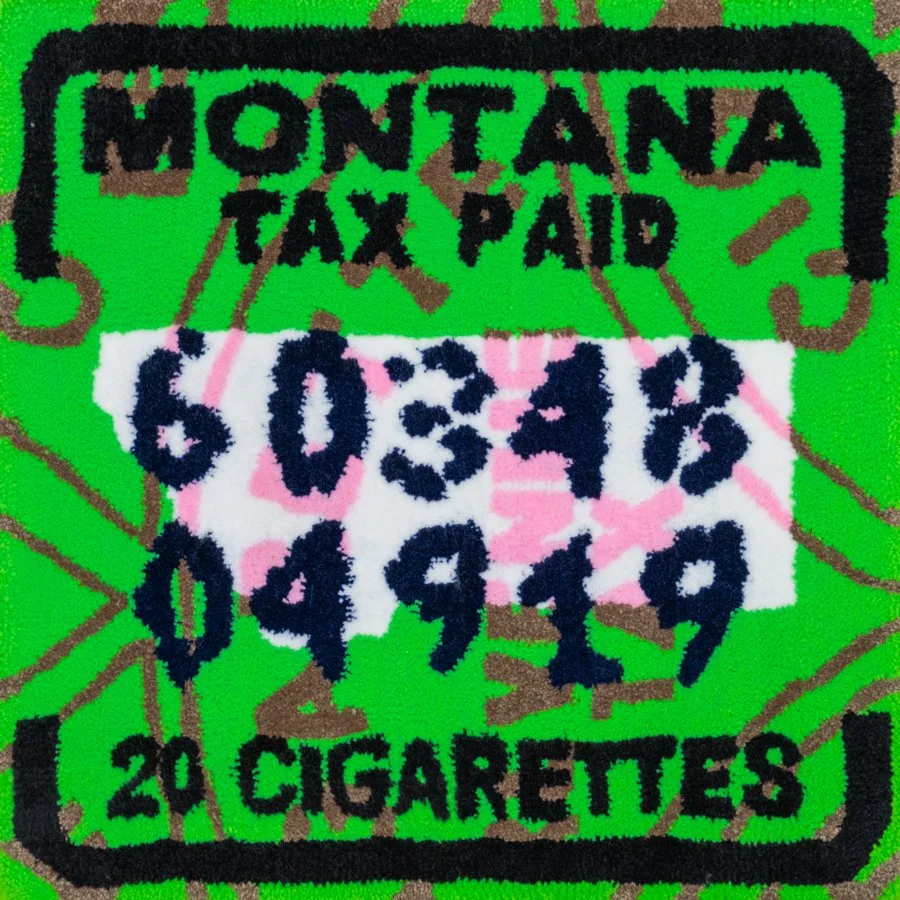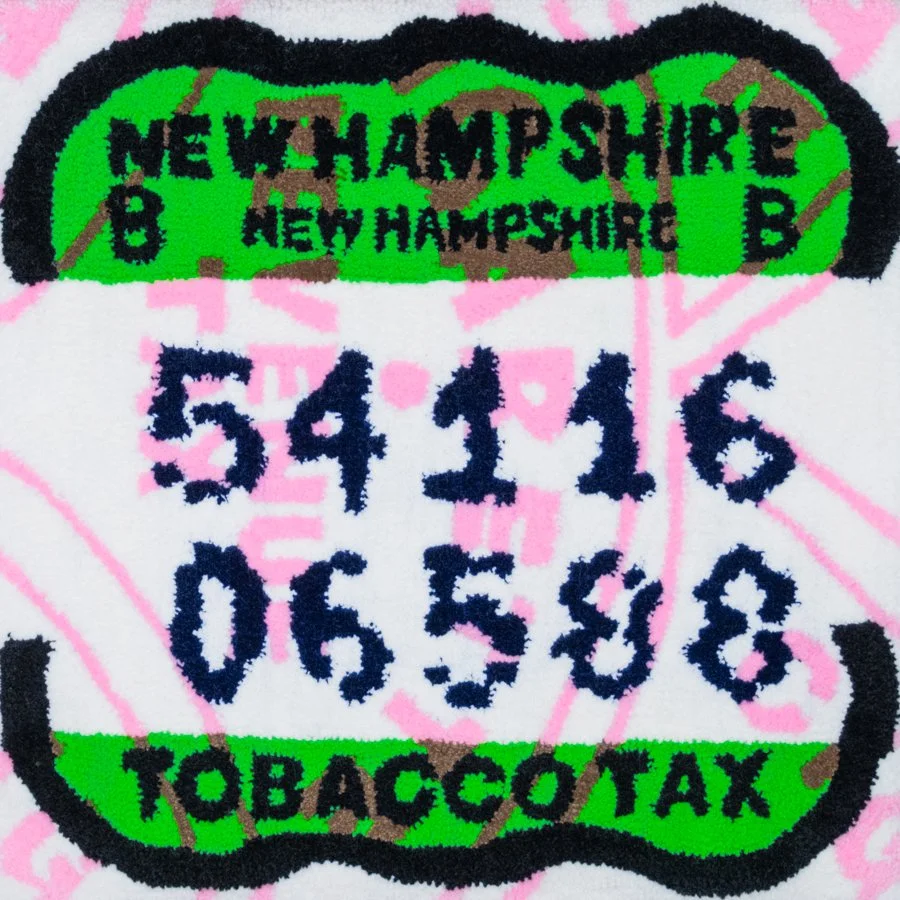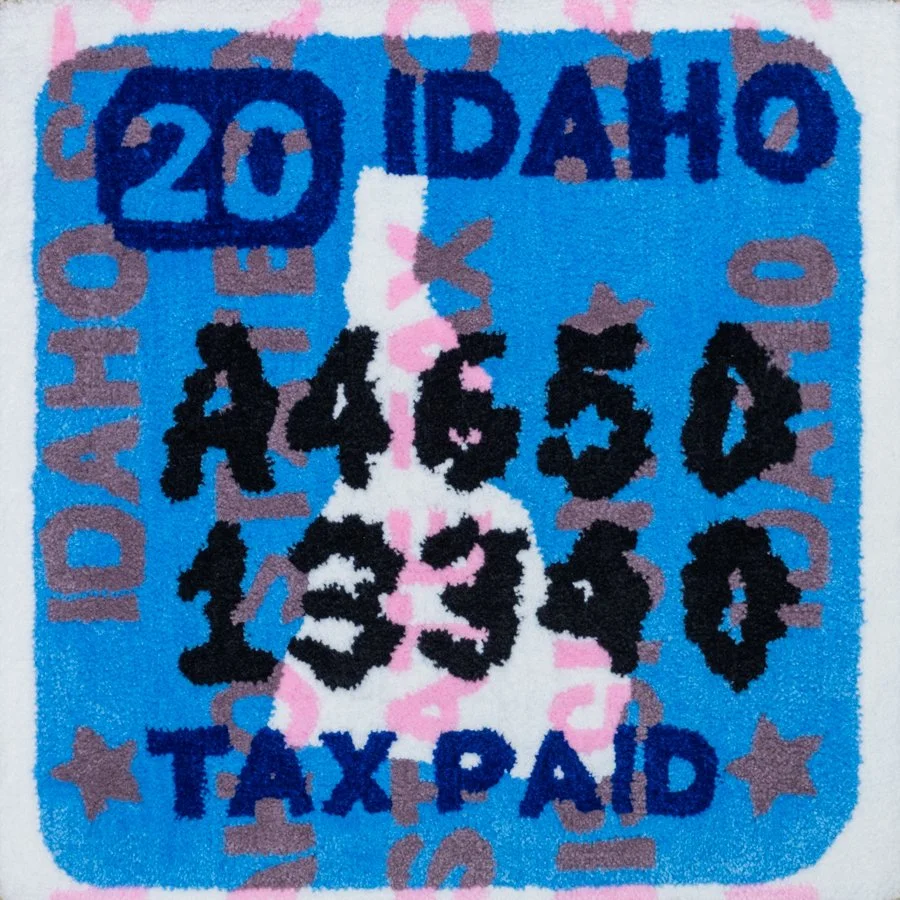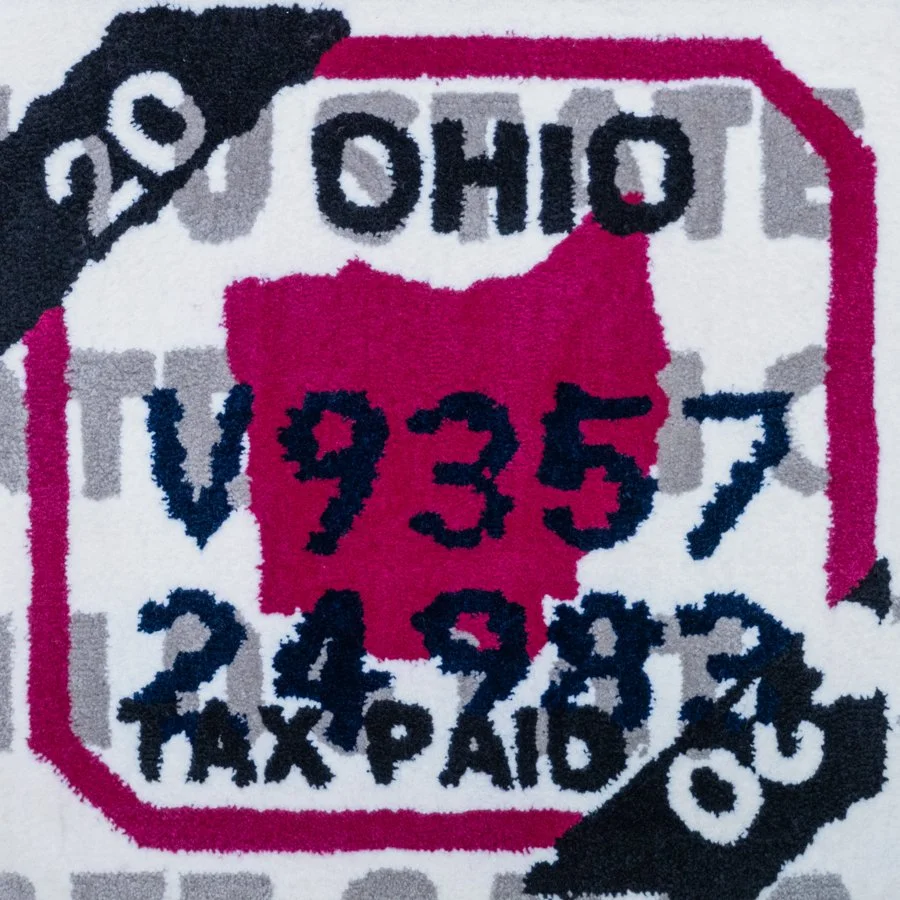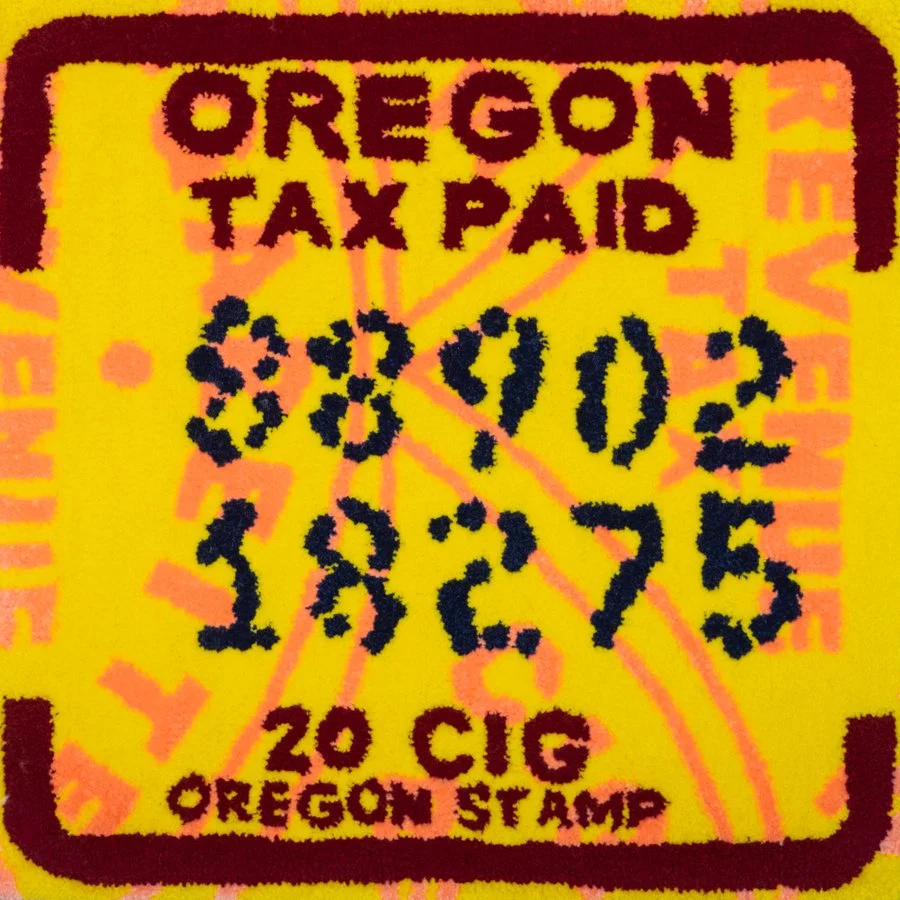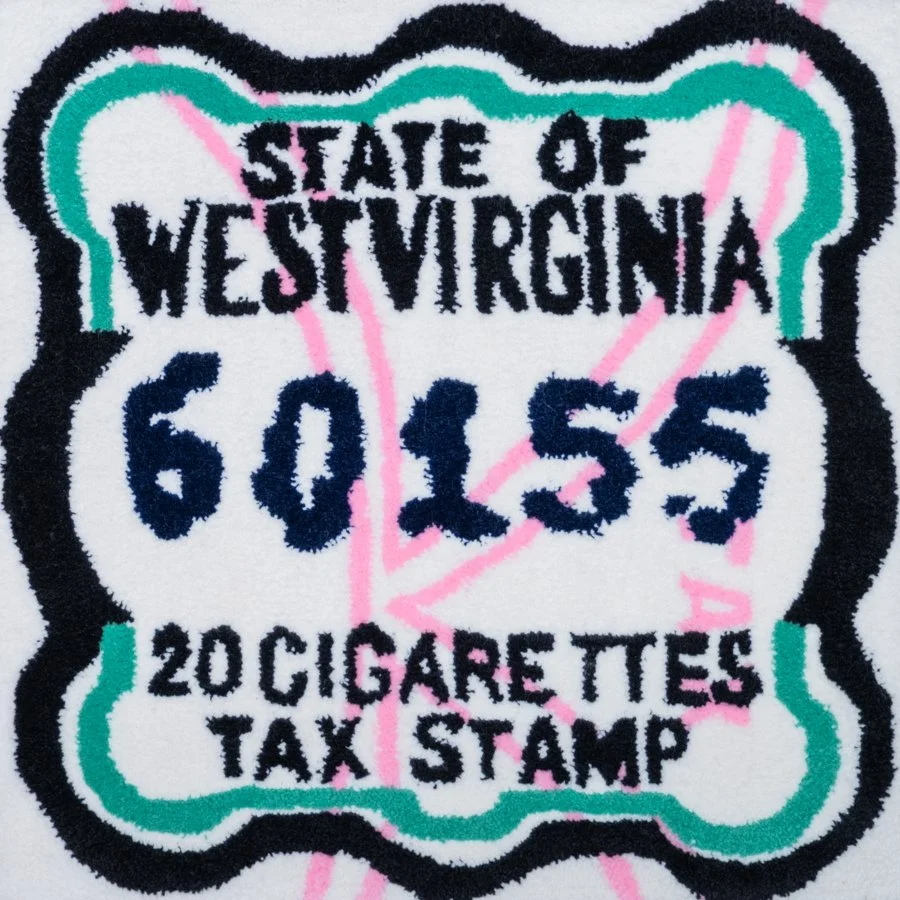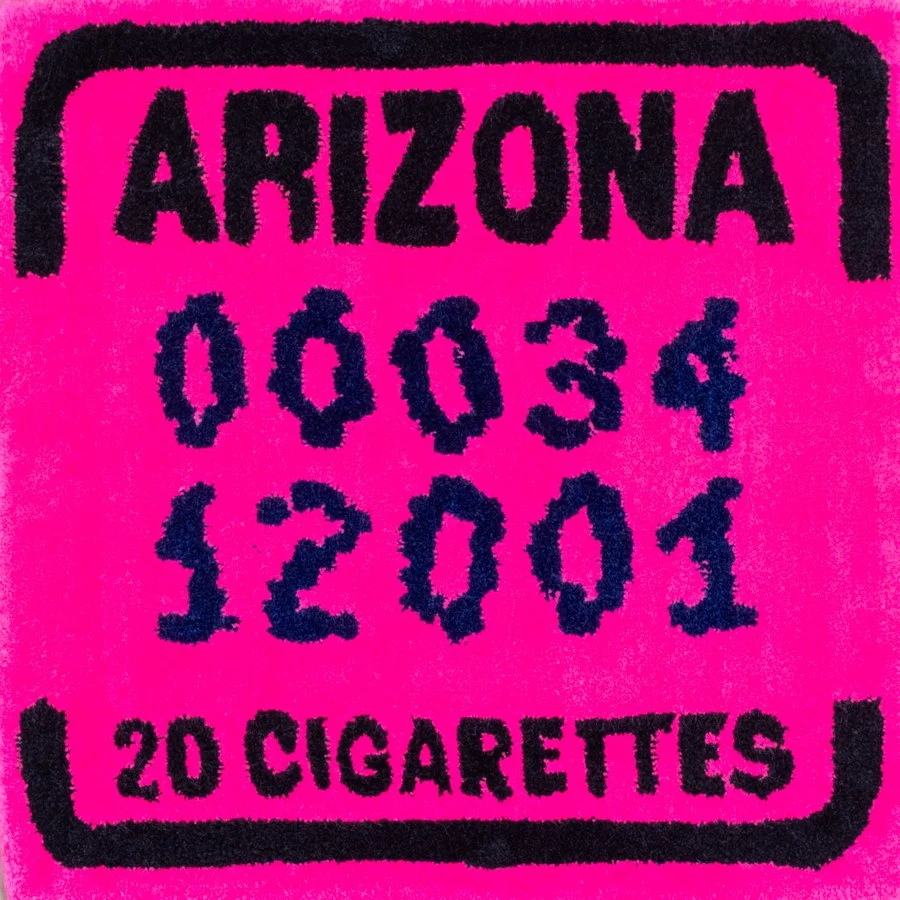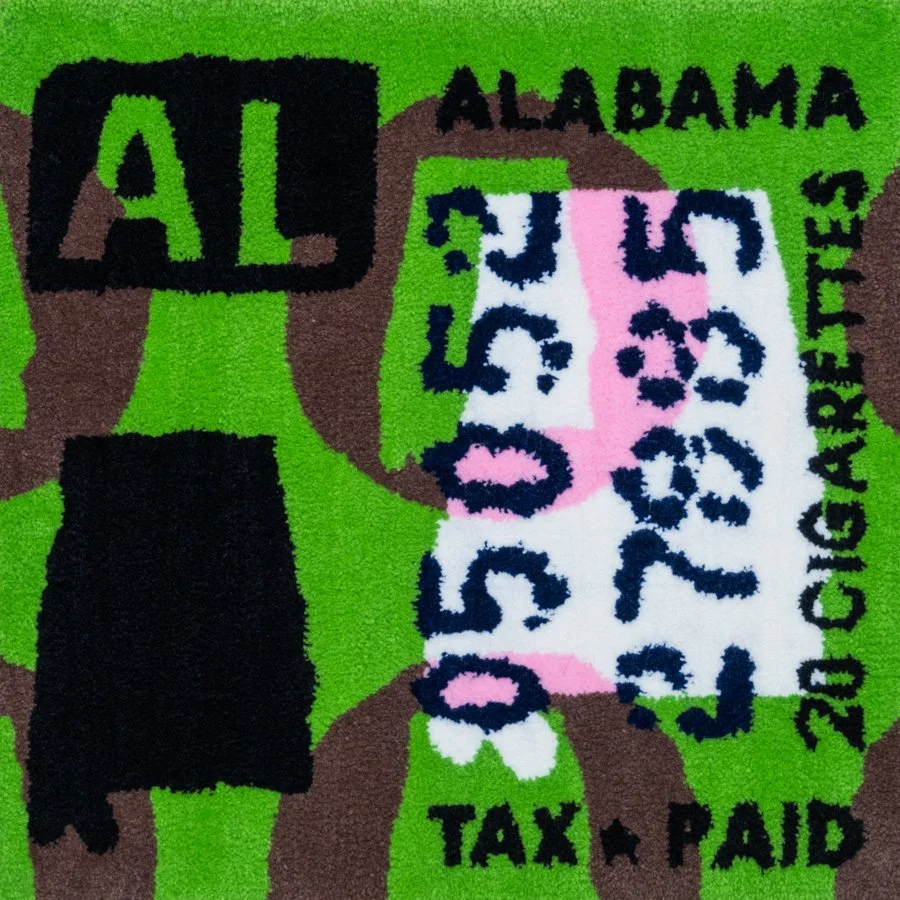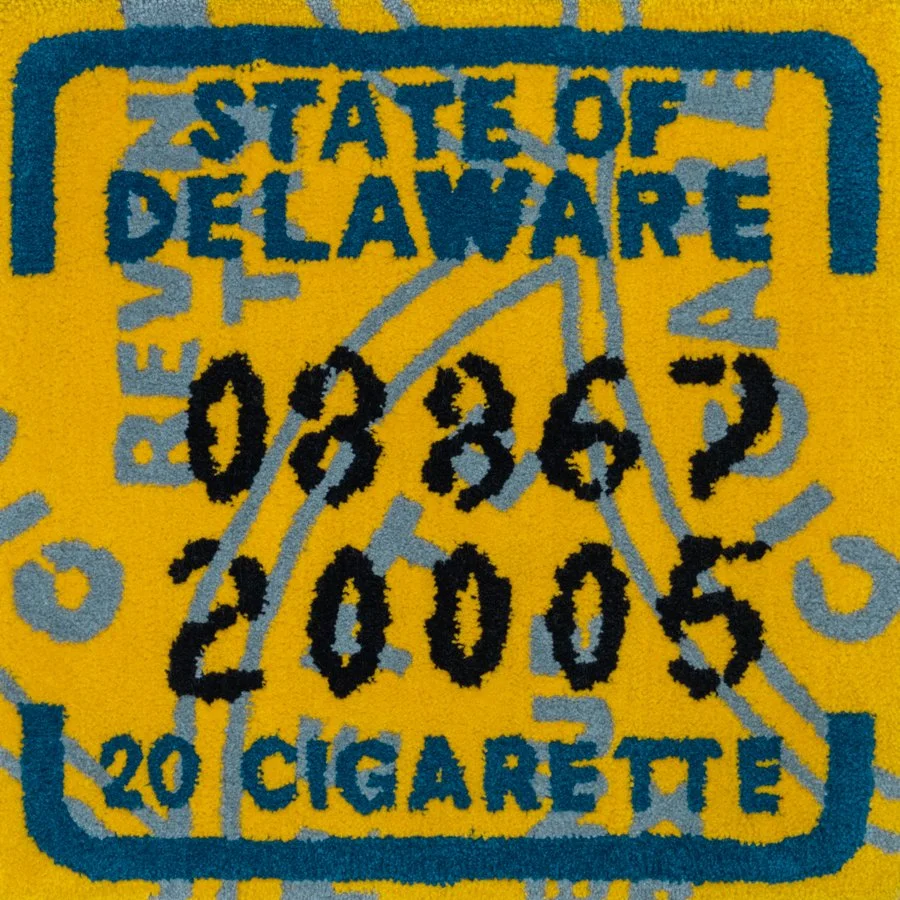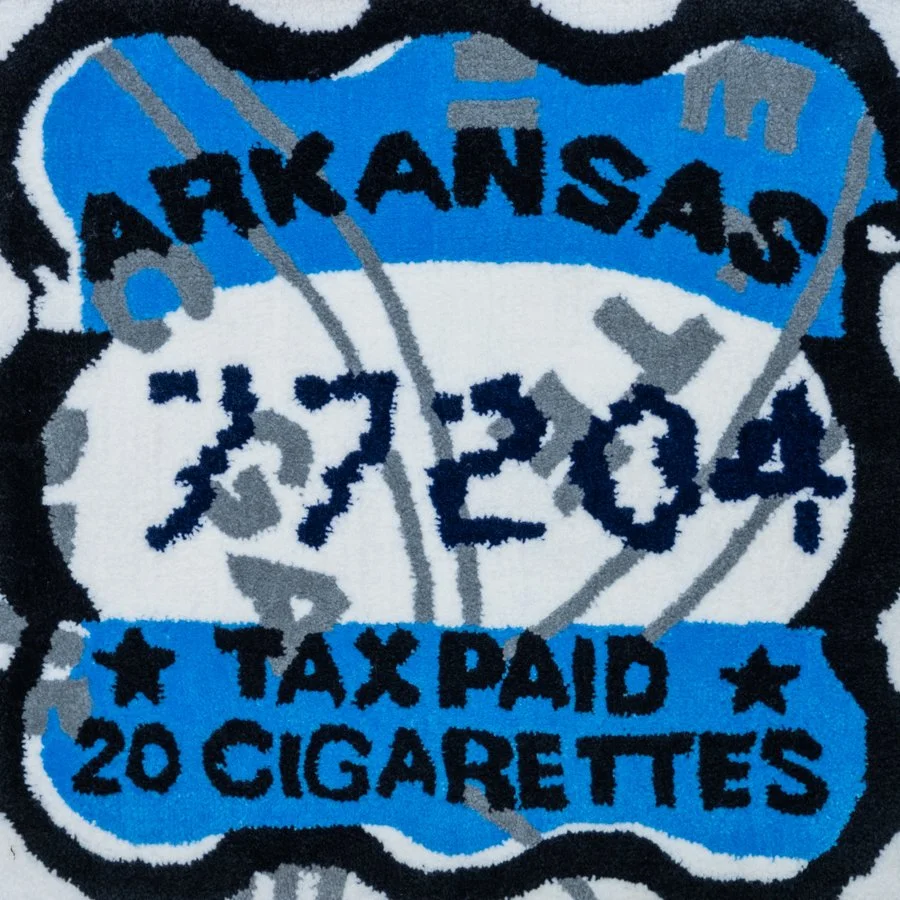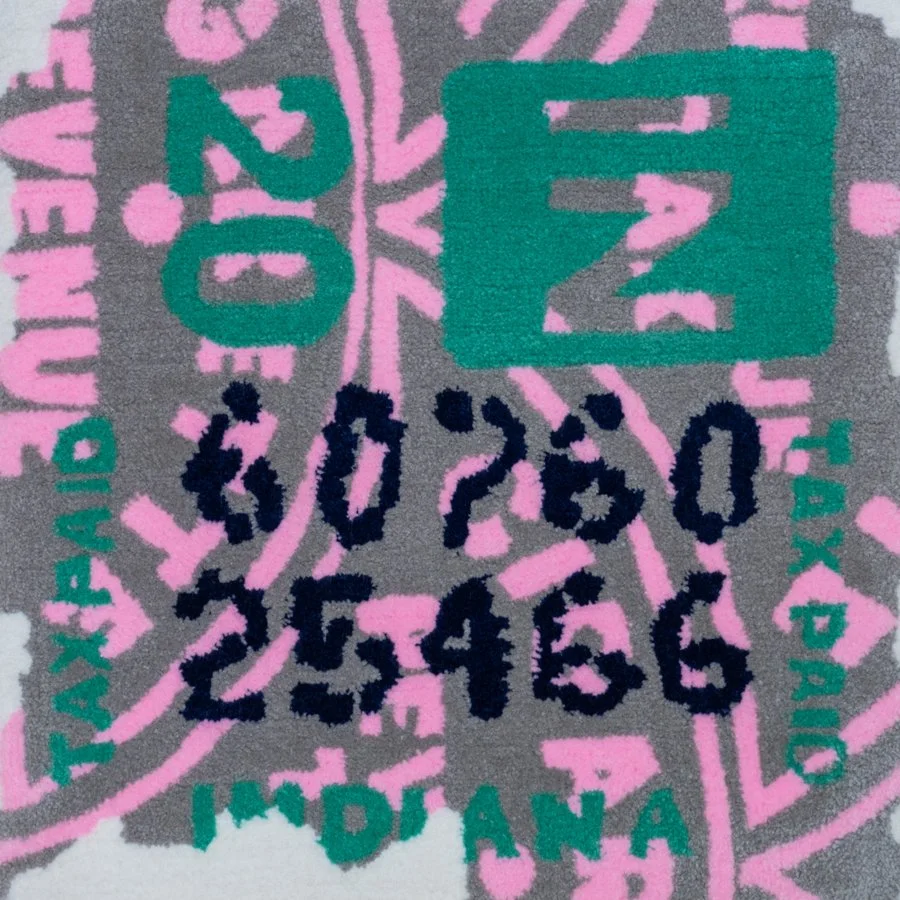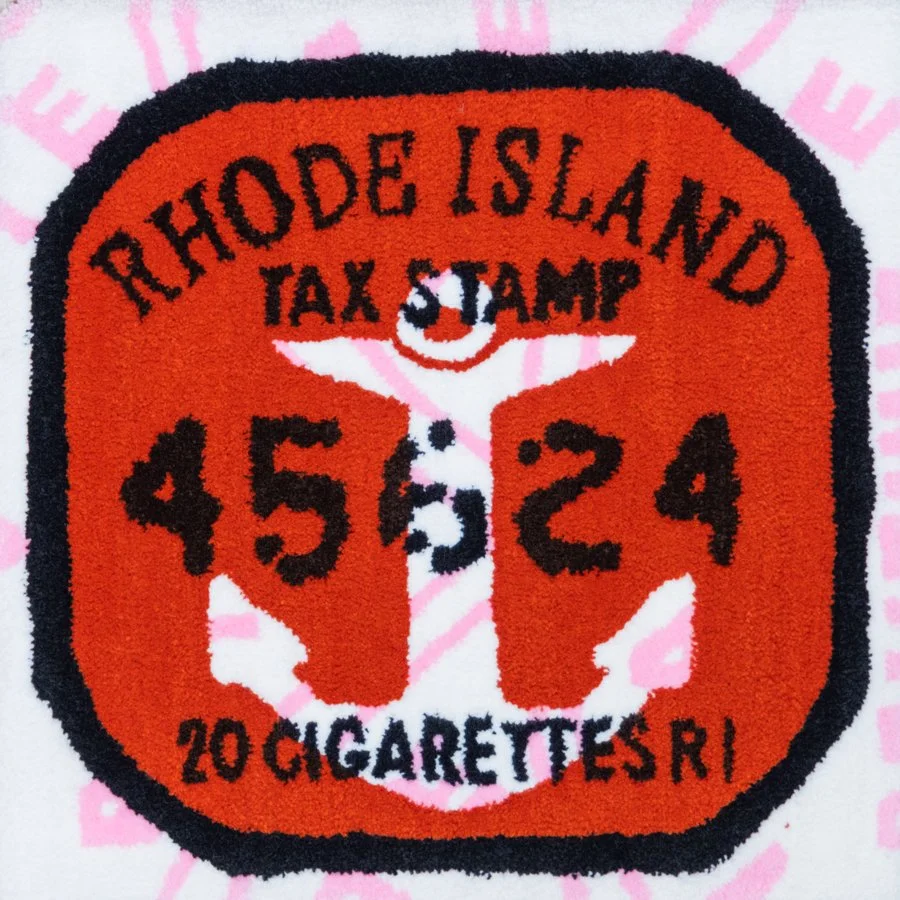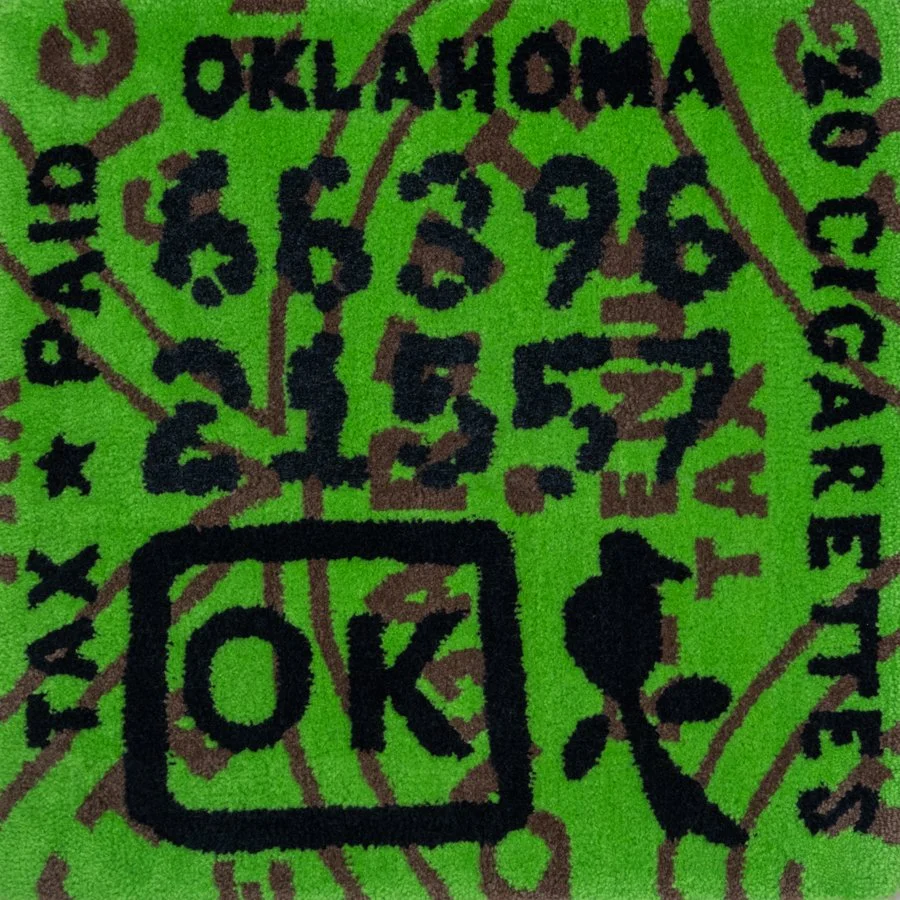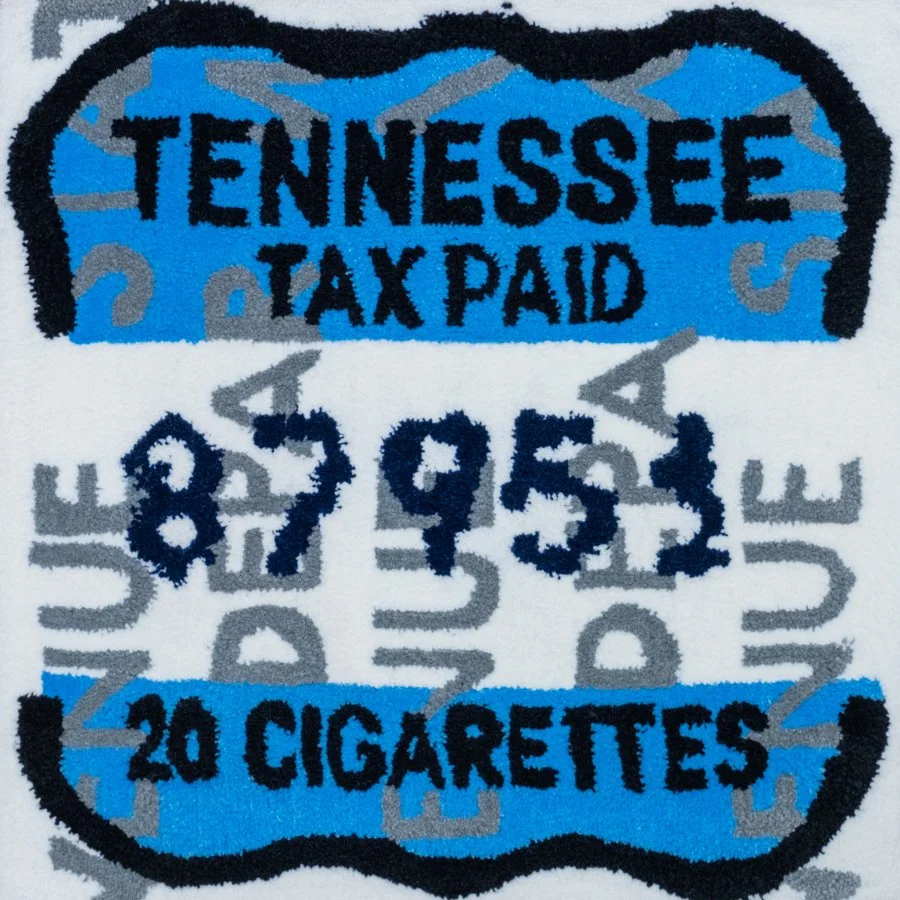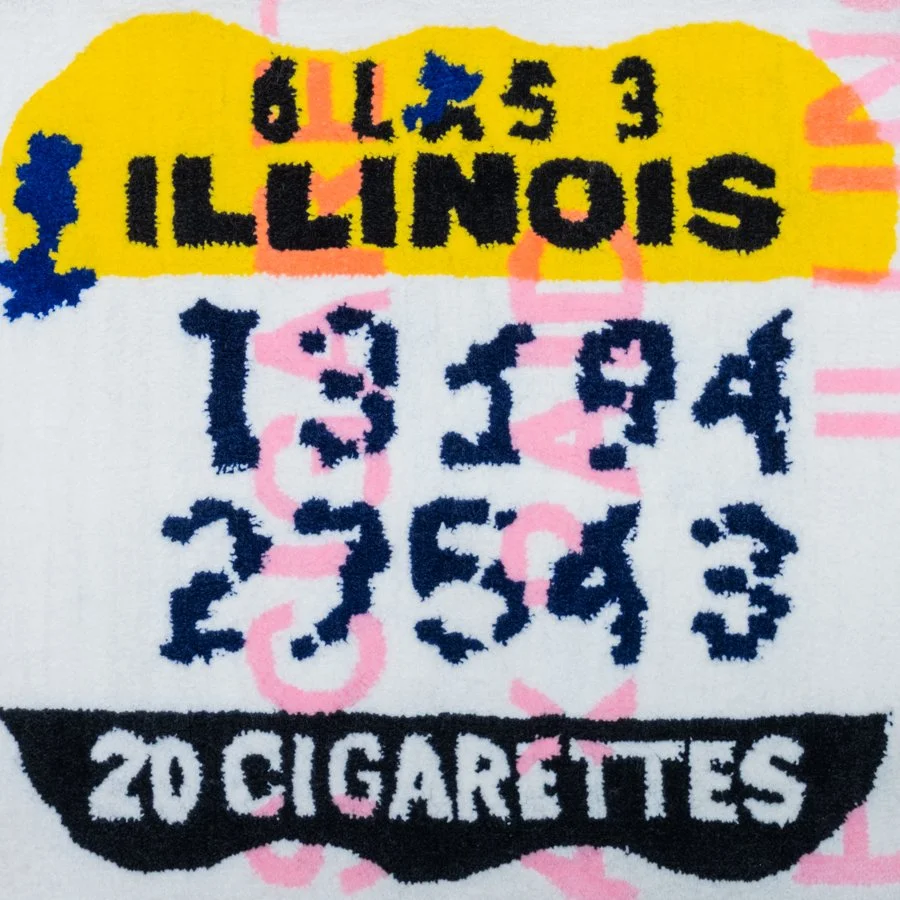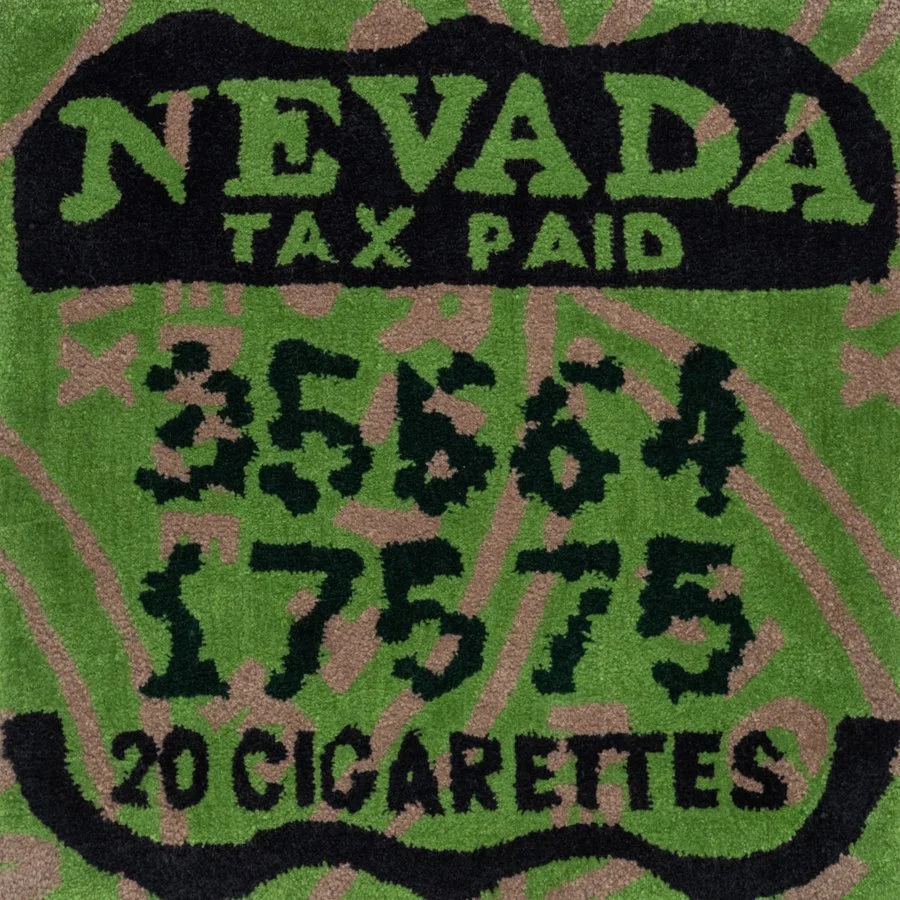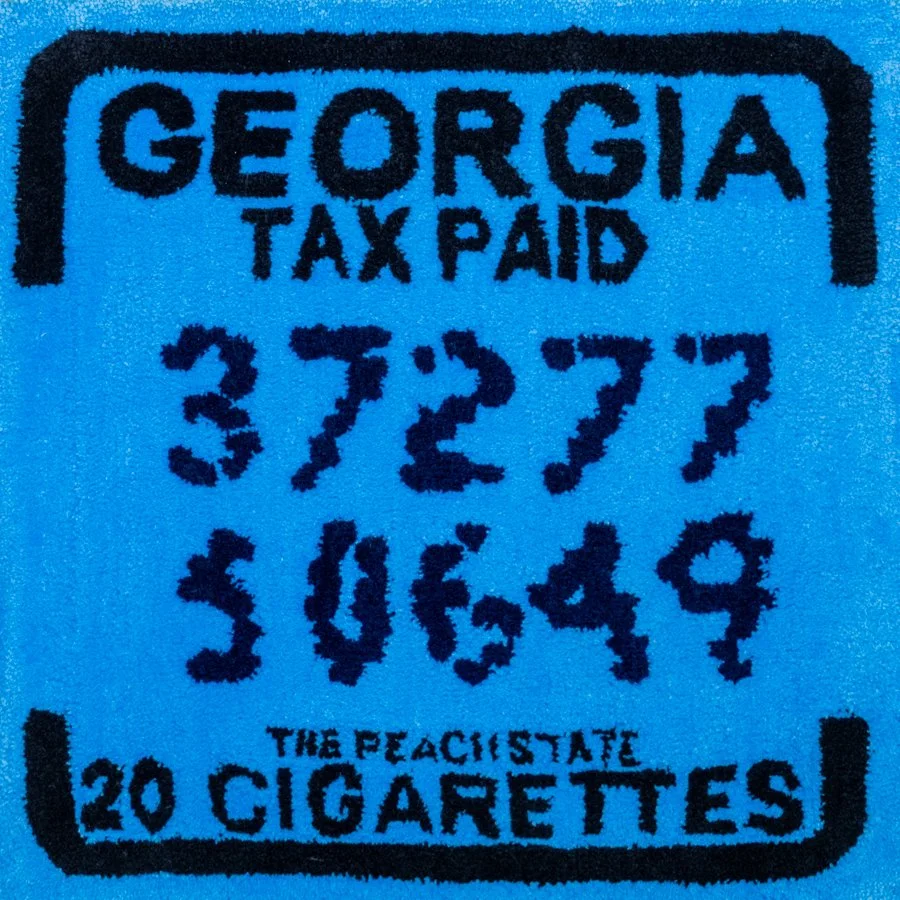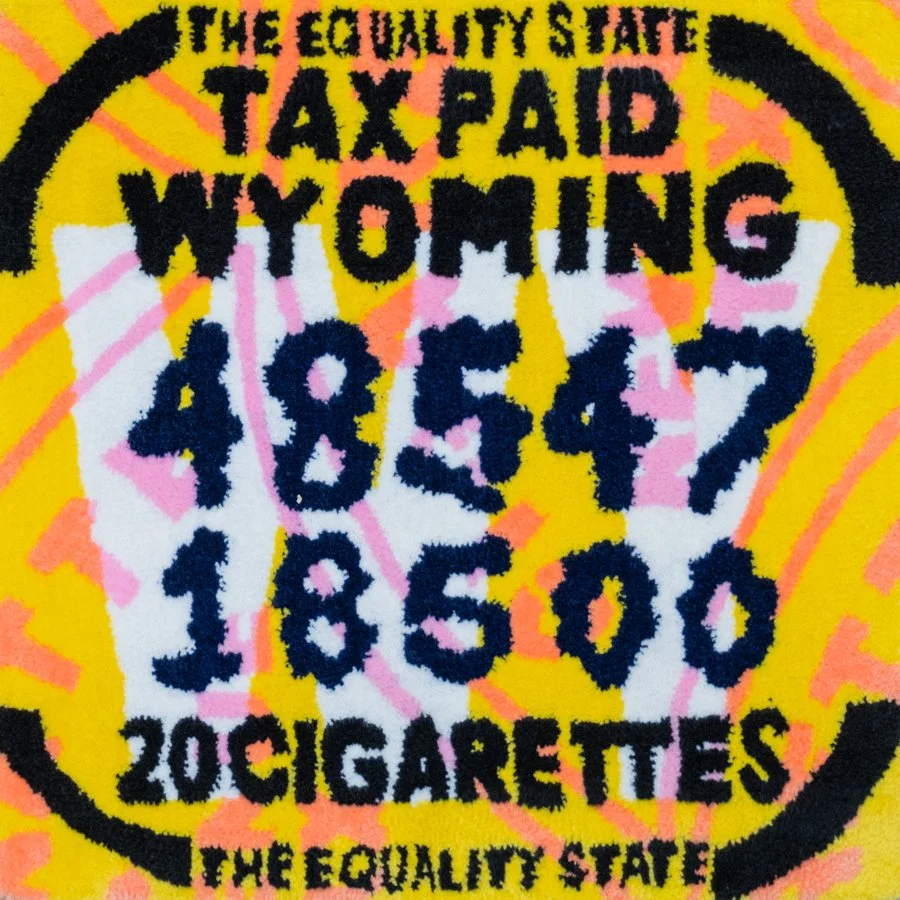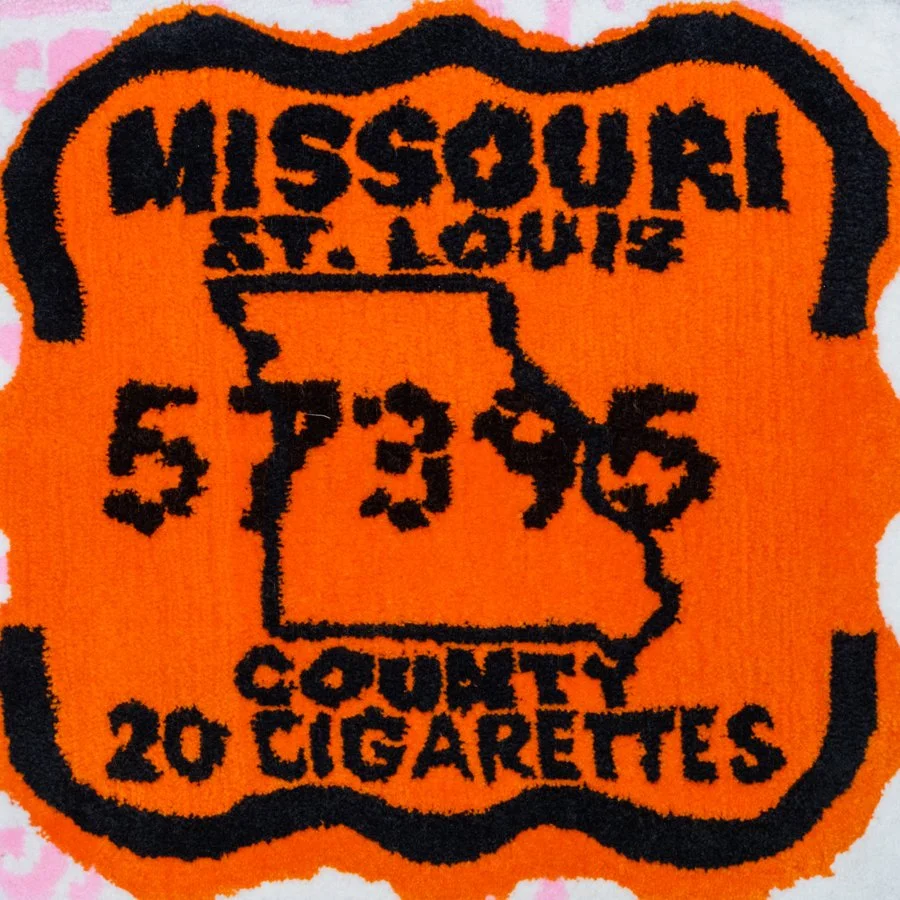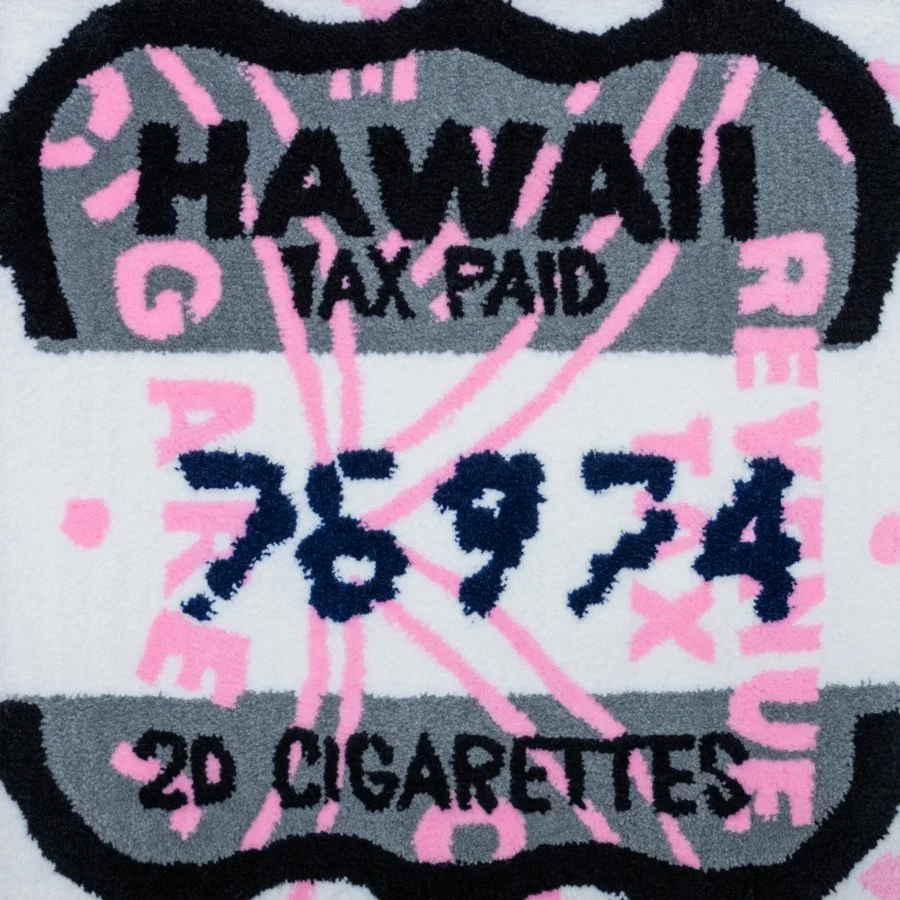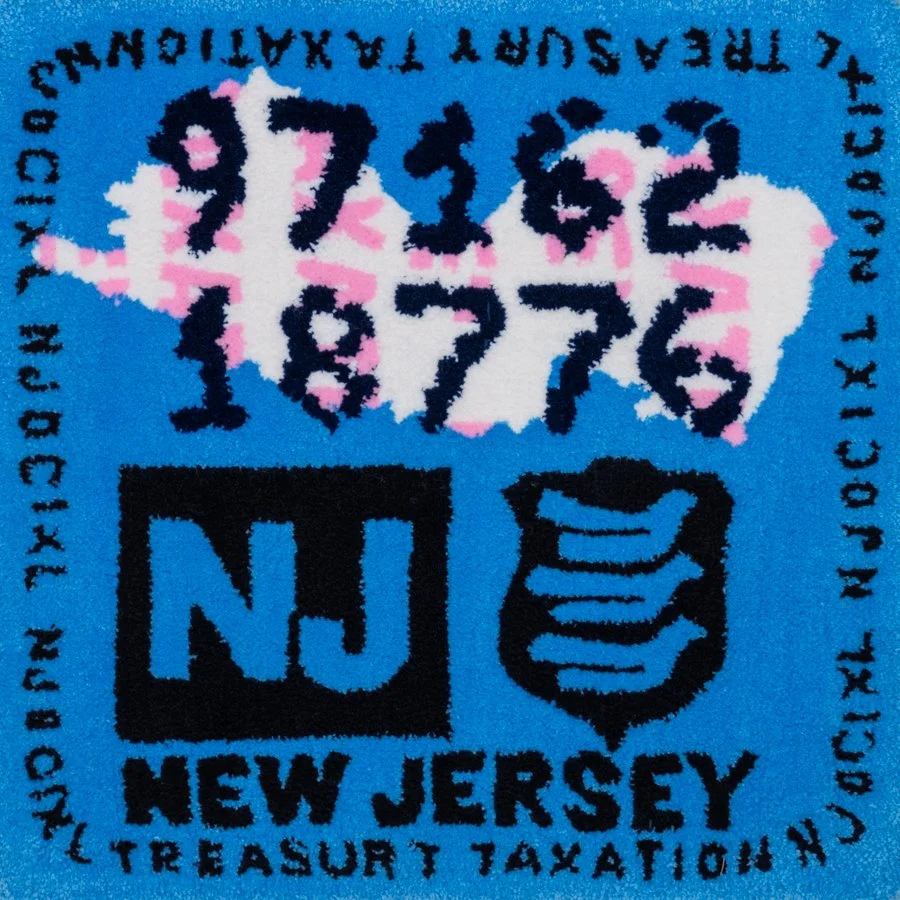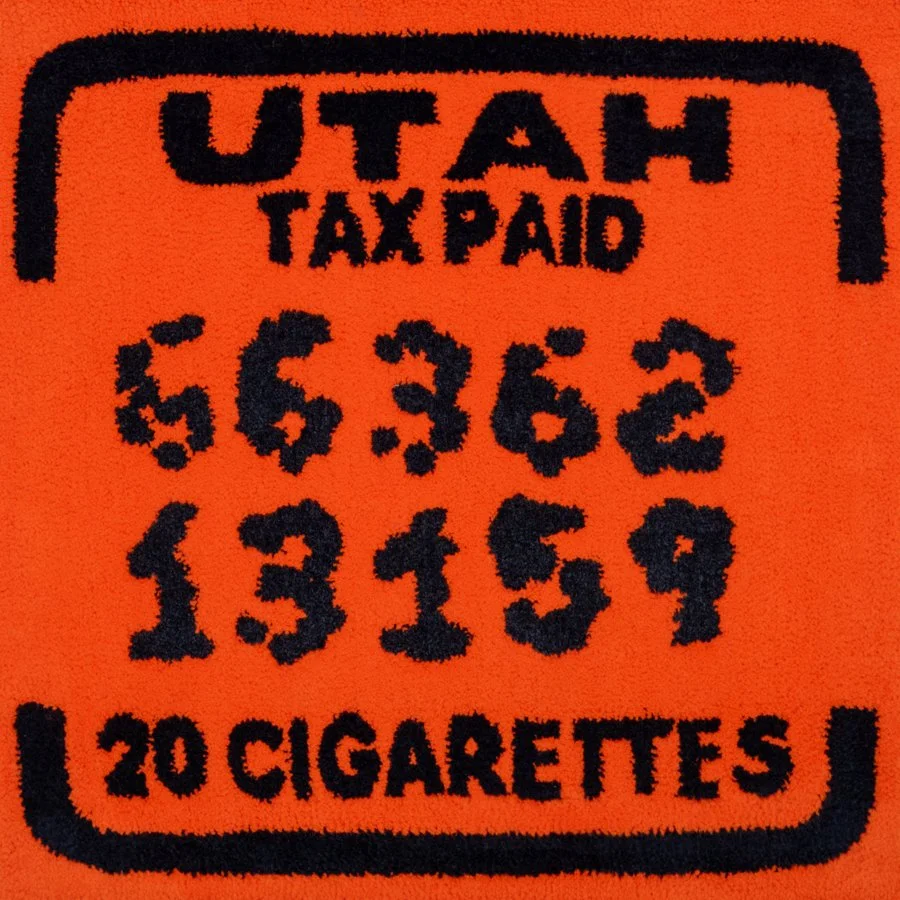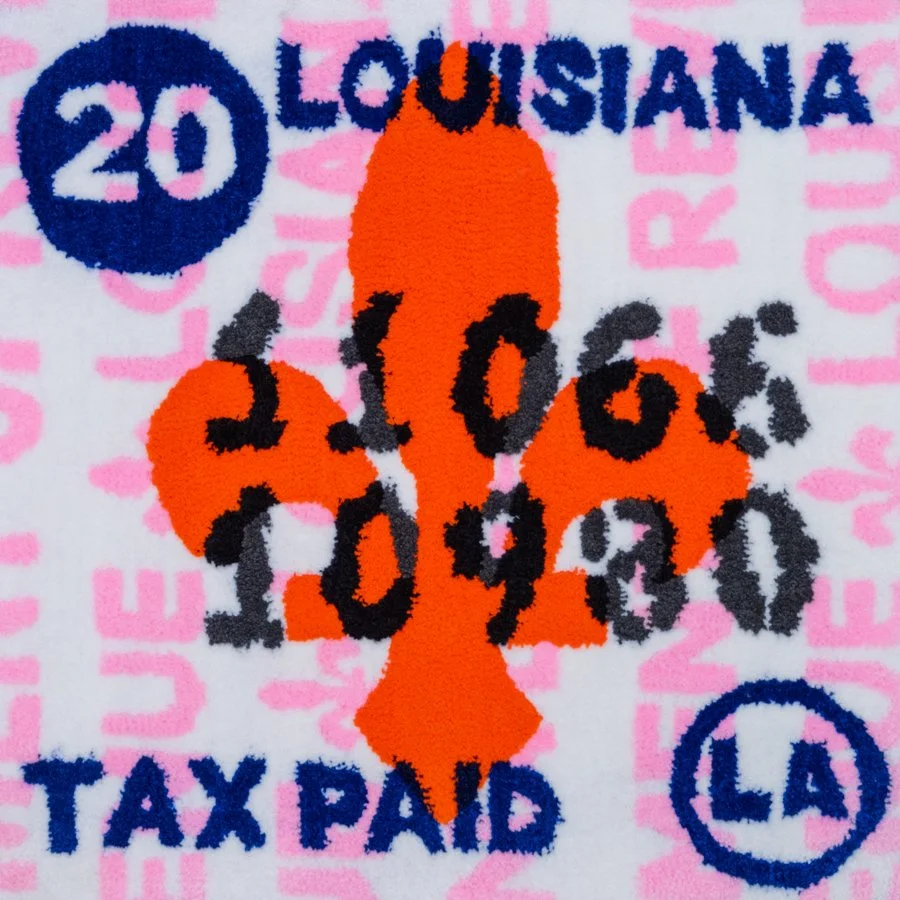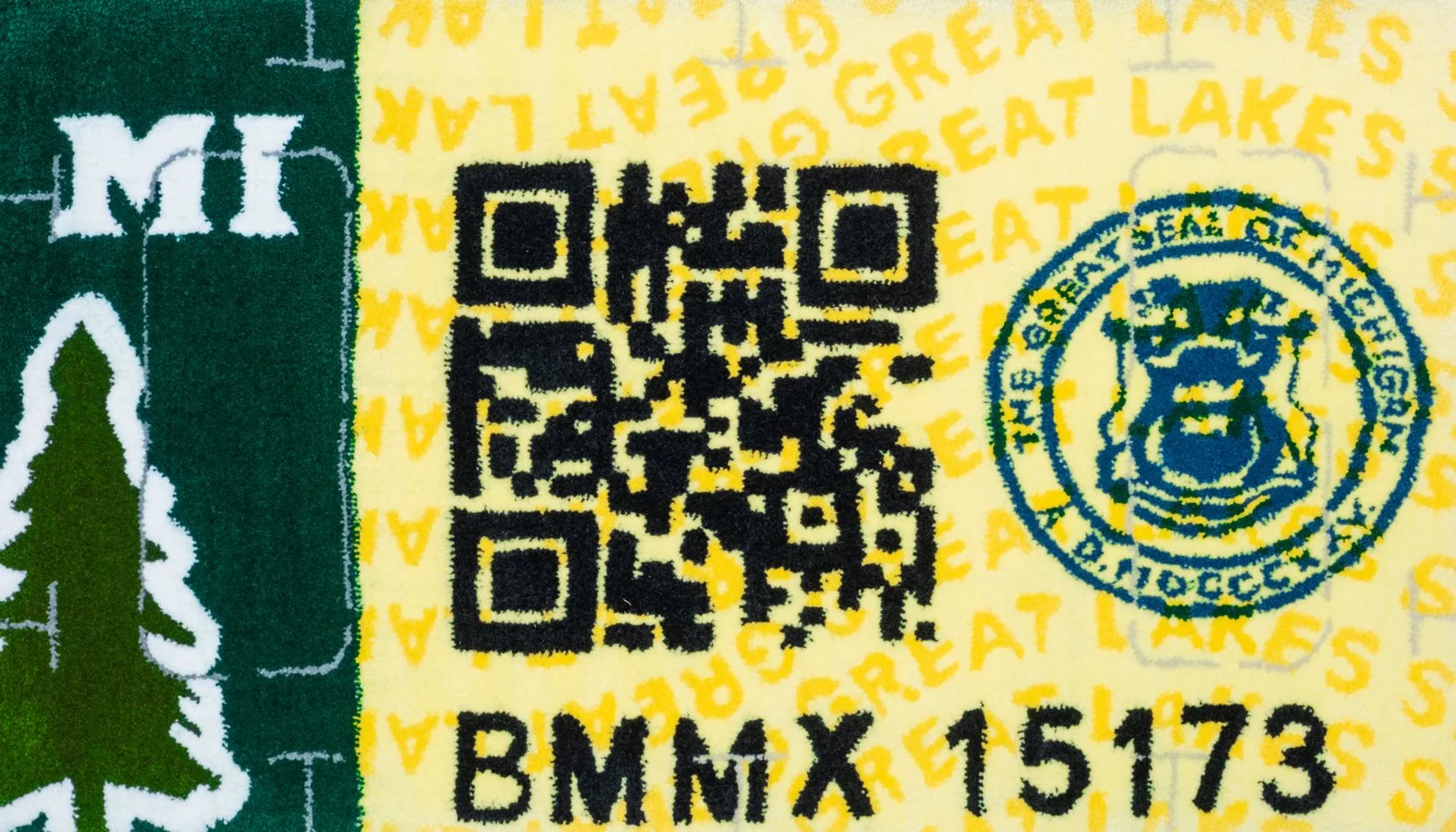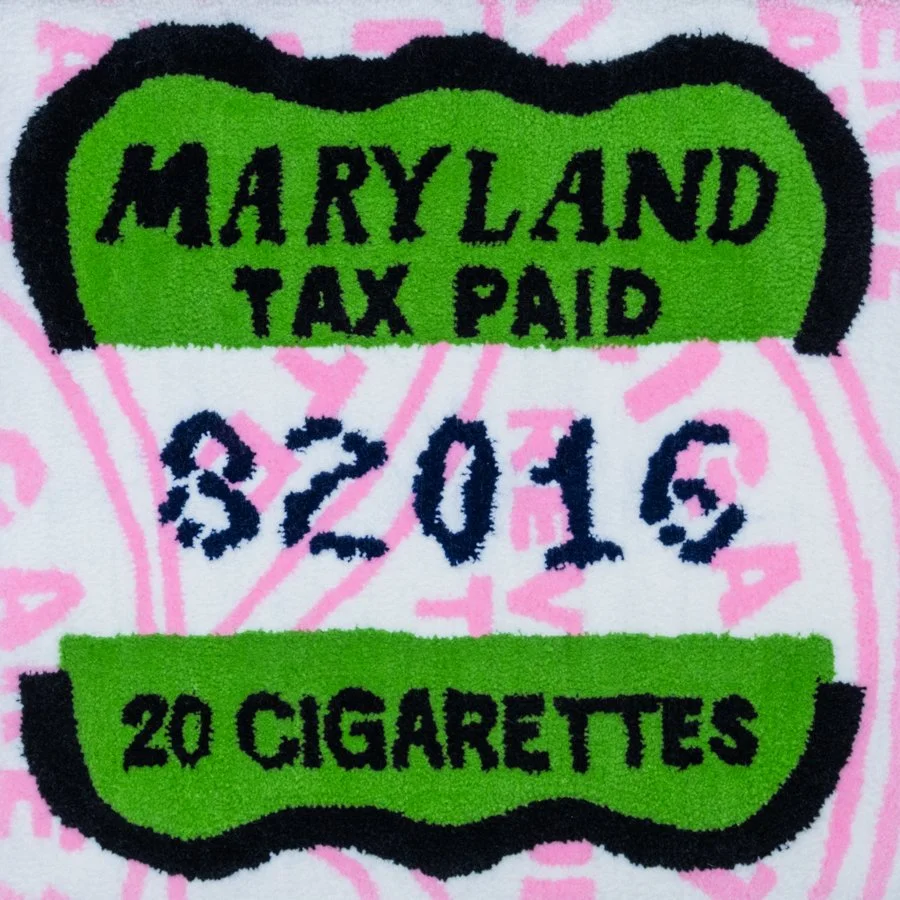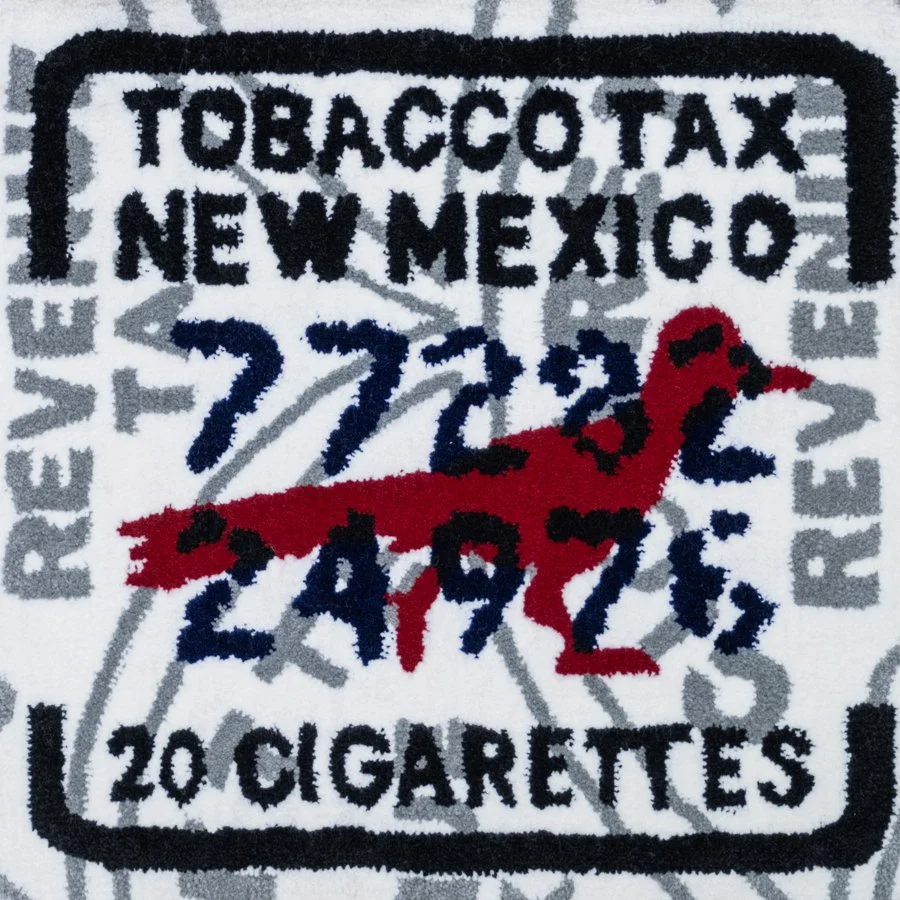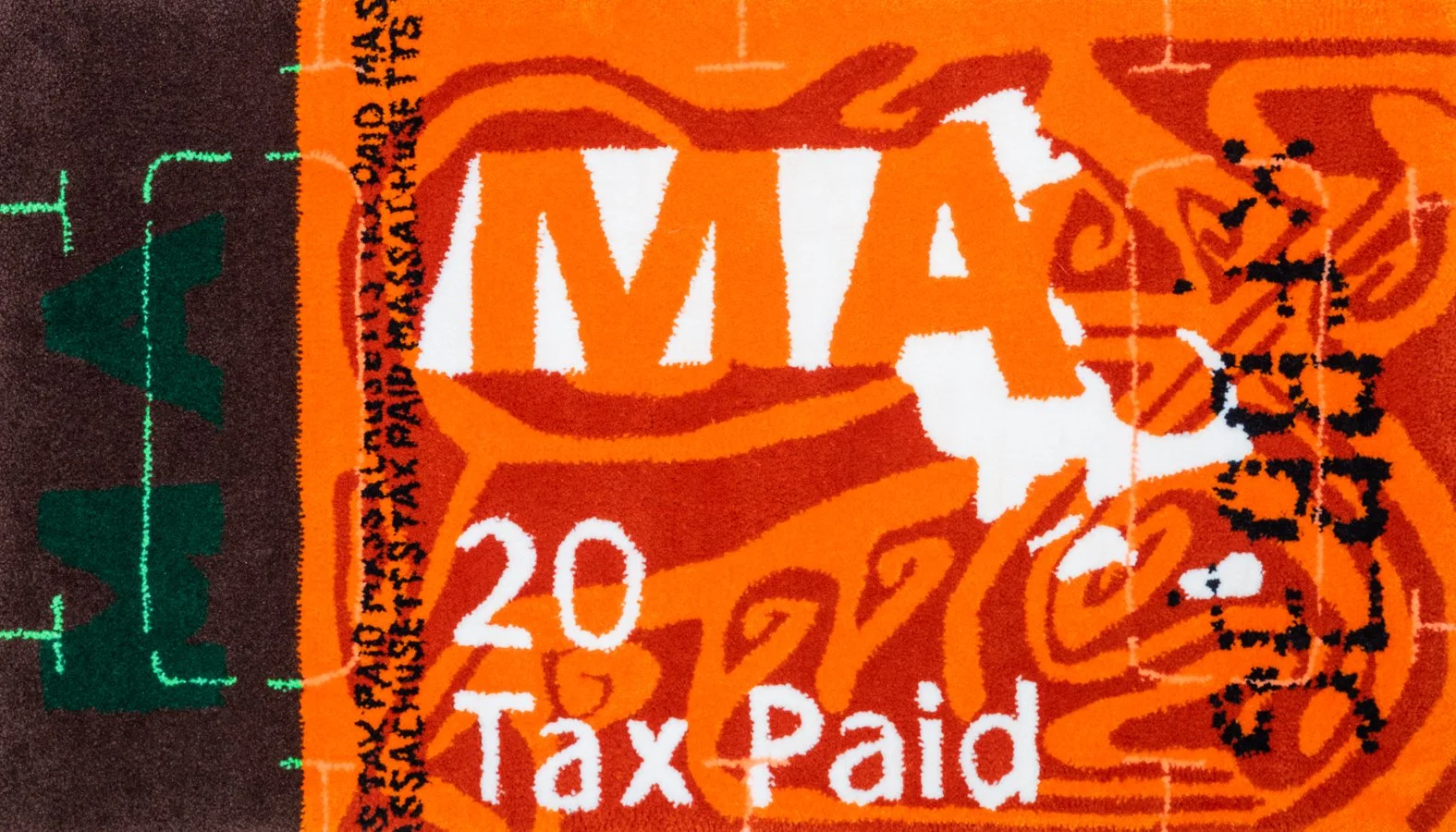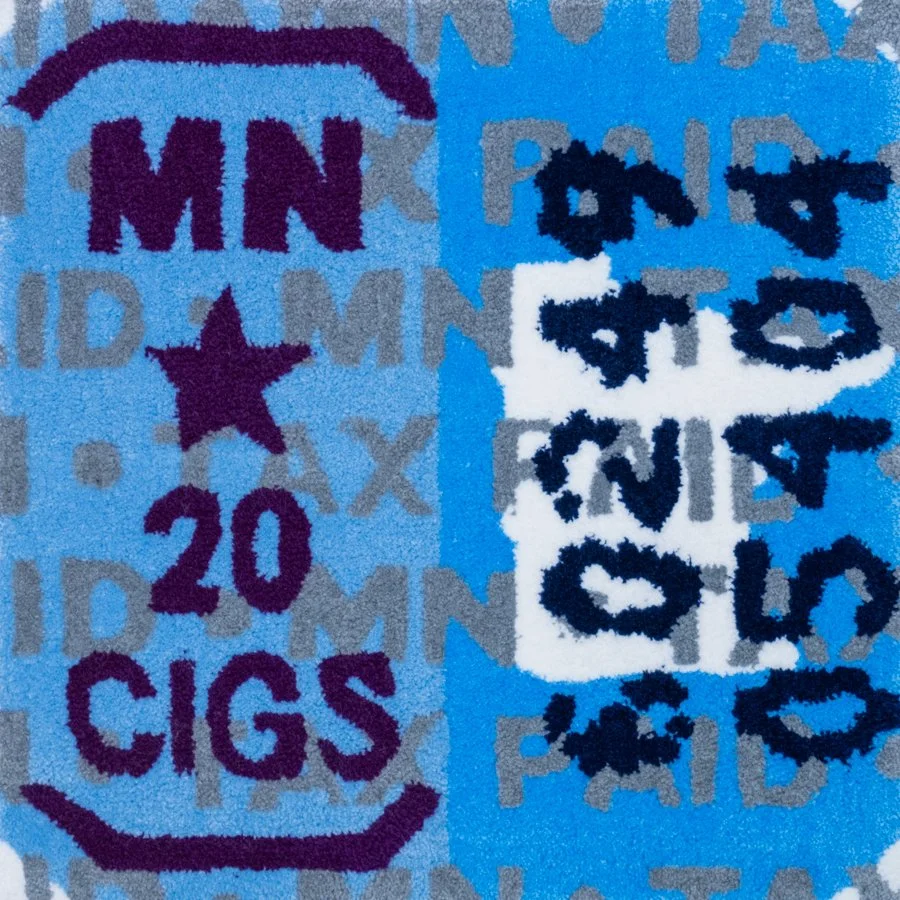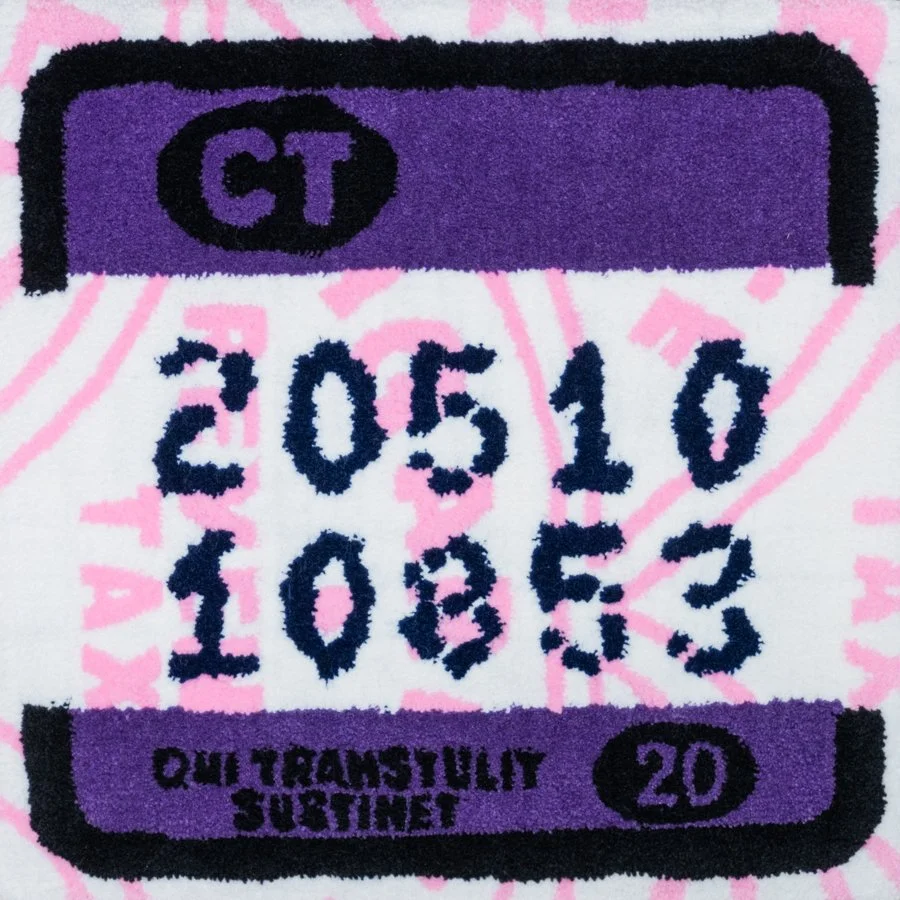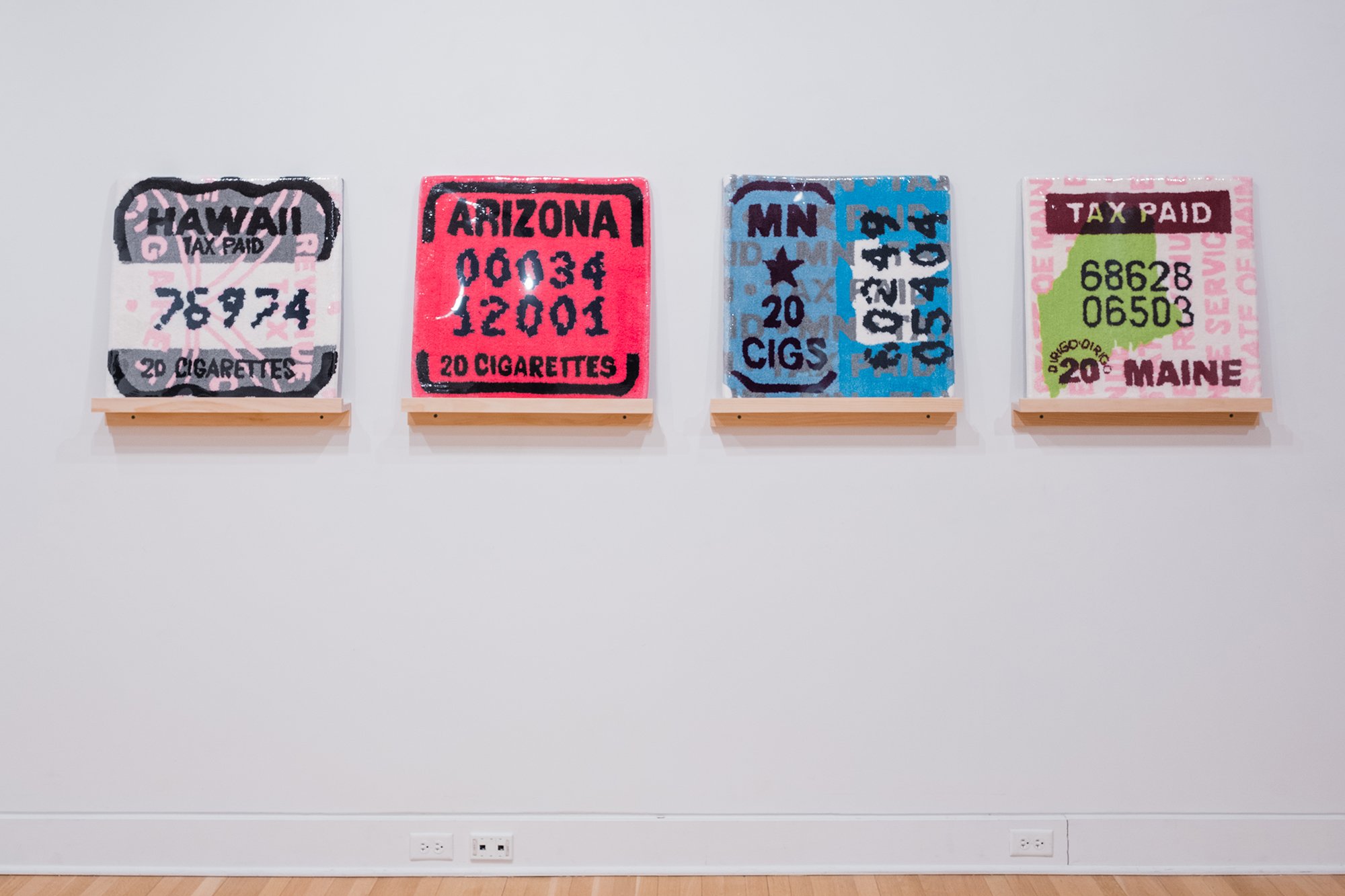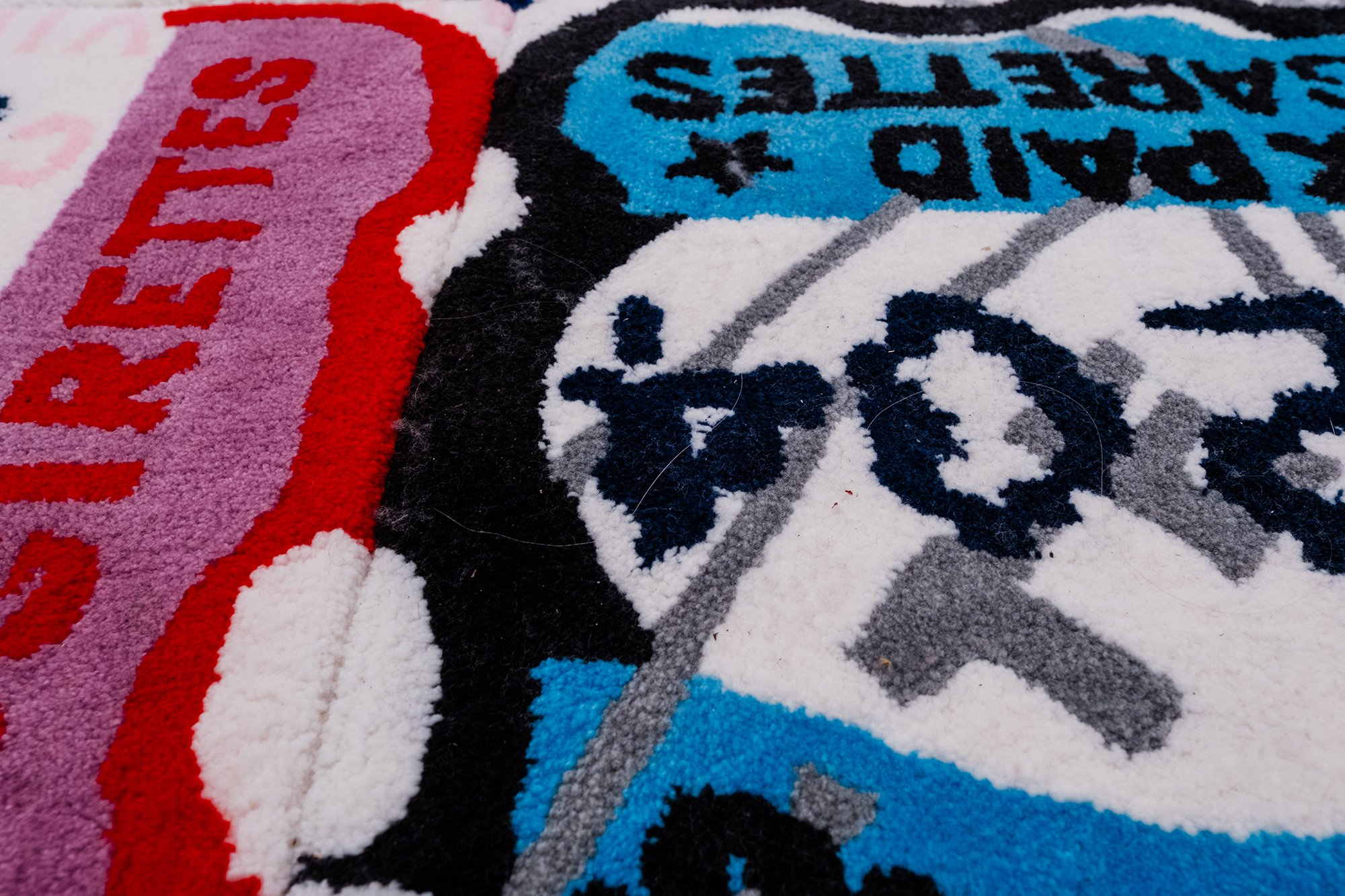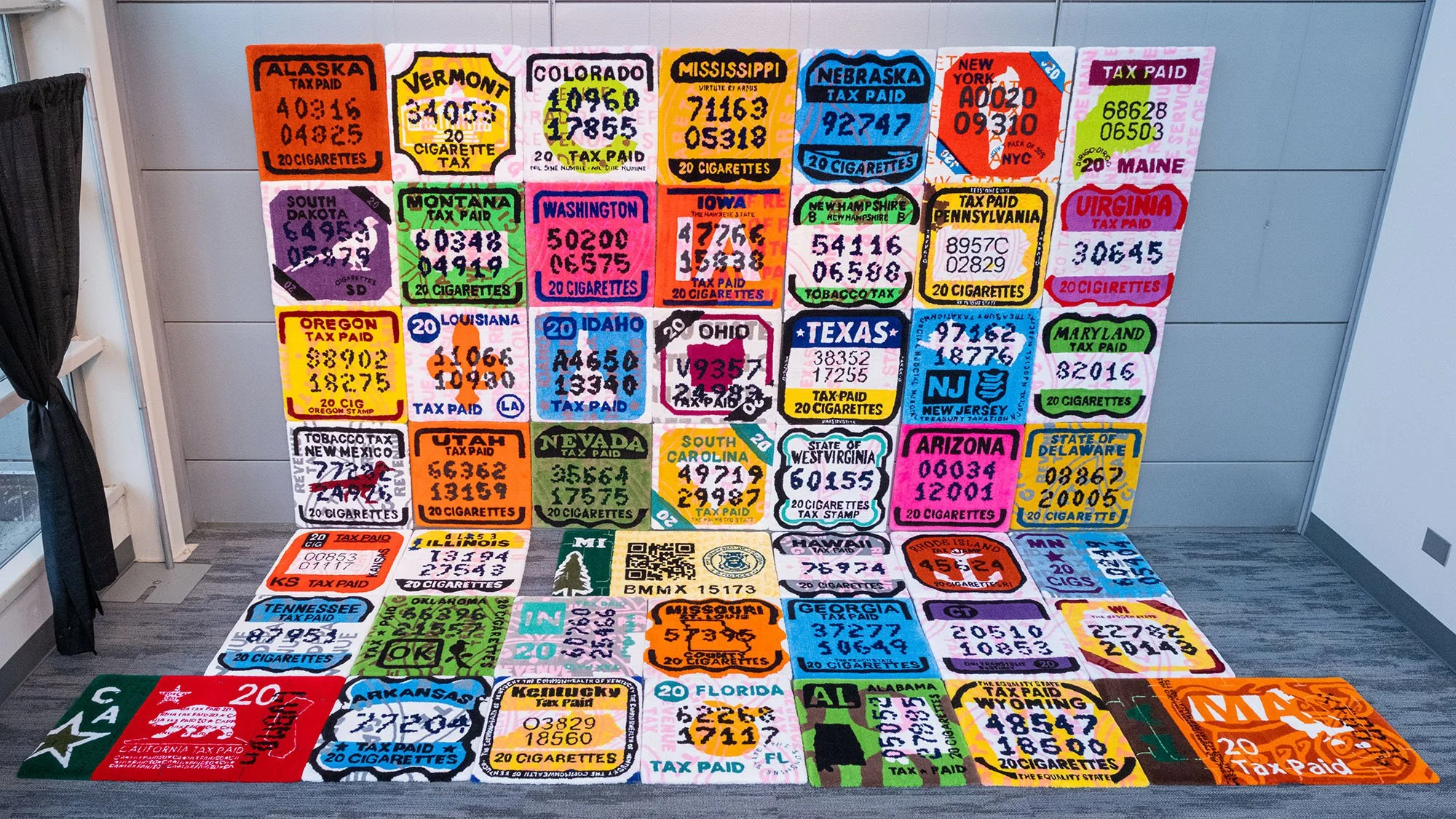
(tobacco) tax tufting …
an ongoing project.
It all started with a piece of carpet. Burnt into the green pile were traces of hot cigarette ash that dropped to the ground as my dad fell asleep. Cigarettes were Dad’s way to pass time. The byproducts of this addiction are now an integral part of my practice.
When I looked at Dad’s cigarette packs, I noticed a tiny sticker on the bottom of each one. The sticker was a tobacco tax stamp. I very quickly went down a rabbit hole of tobacco tax stamps, how they’re different from state to state, how to get them because there is no public database, and how I could translate them into large rugs.
After Dad passed, I put out a call to anyone I knew, and complete strangers, asking them to send me empty packs of cigarettes so I could scan the stamps as source material for the rugs I planned to make. The scans allowed me to see markings on the stamps that you can’t see with the naked eye. Fun fact: only 48 states require tobacco tax stamps, something I learned when two people sent me packs from North Carolina, a state with no stamp.
These rugs were a way for me to process individual and collective grief. They are colorful reminders that it’s okay to find joy amidst pain, that people will show up for you even if they don’t know you, and how addiction is woven into the fabric of American culture and history.
*The rugs from the states my dad never visited are wrapped in cellophane, and placed on shelves on the wall, because these are places he will never get to visit, experiences he will never get to have.
*Each day in the gallery the rugs were moved, forcing you to move around the space differently, to interact with the works in new ways.
*Nothing stops viewers from walking on the rugs, so they are physically changed throughout the exhibition.
